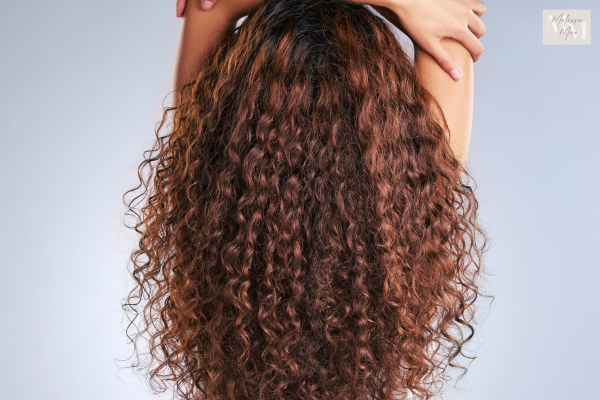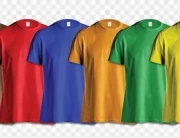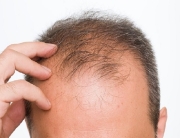When it comes to hair colour, choosing the right technique can make all the difference in achieving the perfect look. Two popular methods, balayage and traditional highlights, often leave clients wondering which option is best for their hair. Whether you’re seeking a sun-kissed glow or bold, defined streaks, understanding the differences between balayage and highlights can help you make an informed decision. If you’re exploring Balayage Services in Melbourne, this guide will clarify the distinctions and assist you in selecting the right method.
What is Balayage?
Balayage is a French word that means “to sweep” or “to paint.” This technique involves hand-painting colour onto the hair, resulting in a natural, sun-kissed look. Unlike traditional highlights, balayage does not use foils, allowing the colour to blend seamlessly into your hair, mimicking the effect of natural sunlight.
- Natural Effect: The hand-painting process creates a more subtle transition between the coloured sections and the rest of your hair.
- Low Maintenance: Balayage grows out more naturally and doesn’t leave a harsh root line, meaning fewer touch-ups.
- Versatile: Suitable for all hair types and lengths, from short bobs to long waves.
Traditional Highlights Explained
Traditional highlights use foils to separate sections of hair before applying colour. The foils help intensify the colour and create a more uniform, streaked appearance. This method typically provides a more structured and defined look than balayage.
- Defined Contrast: Highlights create a sharp contrast between your natural colour and the lightened sections, offering a more dramatic look.
- Customisation: Depending on your preference, you can opt for chunky highlights for a bolder look or finer highlights for a softer appearance.
- Requires Regular Maintenance: Unlike balayage, traditional highlights grow out with a more noticeable root line, requiring frequent touch-ups to maintain the look.
Key Differences Between Balayage and Traditional Highlights
Understanding the main distinctions between these two techniques is essential when deciding which one to choose. Let’s break down the key differences:
1. Application Technique
- Balayage: Hand-painted freehand, giving a more gradual and blended look.
- Traditional Highlights: Foil-wrapped sections provide more uniform and consistent colouring.
2. Final Appearance
- Balayage: Results in soft, sun-kissed highlights with natural-looking depth and dimension.
- Traditional Highlights: Creates a more dramatic contrast with defined streaks of colour.
3. Maintenance
- Balayage: Lower maintenance, as the technique allows for a softer grow-out phase.
- Traditional Highlights: Higher maintenance due to visible root growth, requiring more frequent salon visits.
4. Hair Health
- Balayage: Generally gentler on the hair because it doesn’t involve saturating the hair with colour from root to tip.
- Traditional Highlights: More chemicals are used, particularly if you lighten the entire strand, which could be more damaging over time.
Pros and Cons of Balayage
Balayage has become a go-to choice for many, thanks to its natural look and low upkeep. However, like any colouring method, it has both advantages and disadvantages.
Pros:
- Blends naturally with your hair as it grows out.
- Offers a sun-kissed, beachy vibe.
- Requires fewer salon visits for touch-ups.
Cons:
- May not be as effective on very short hair.
- Can be more expensive than traditional highlights due to the time-consuming hand-painting technique.
Pros and Cons of Traditional Highlights
For those seeking a more defined and dramatic effect, traditional highlights remain a popular option. Let’s explore the benefits and potential drawbacks of this technique.
Pros:
- Provides a bolder and more noticeable look.
- Can be customised to achieve either a subtle or dramatic effect, depending on your preference.
- Ideal for those who want lighter hair without fully committing to an all-over colour.
Cons:
- More noticeable root regrowth, which may require frequent touch-ups.
- Can be more damaging to the hair if done too frequently.
Which Technique is Right for You?
Choosing between balayage and traditional highlights depends on the look you want to achieve, your hair type, and your lifestyle. Here are some factors to consider:
- Desired Look: If you want a natural, sun-kissed glow, balayage is ideal. For a more defined, streaky appearance, traditional highlights are a better fit.
- Hair Type and Length: Balayage tends to work best on medium to long hair, while traditional highlights can be customised for all hair types and lengths.
- Maintenance: If you’re not keen on frequent salon visits, balayage’s lower maintenance might be more suitable. However, if you’re after a more structured style and don’t mind the upkeep, traditional highlights will give you that standout look.
Why Choose Balayage Services in Melbourne?
Melbourne is known for its vibrant and trend-setting beauty scene. The city’s professional stylists are well-versed in both balayage and traditional highlights, making it easy to find the perfect service for your needs. If you’re considering Balayage Services in Melbourne, rest assured that the city offers top-notch salons capable of delivering the exact look you desire, with a focus on maintaining hair health and providing customised treatments for each client.
Final Thoughts
Both balayage and traditional highlights have their unique advantages and are suited to different hair types and personal styles. Whether you opt for the natural, low-maintenance charm of balayage or the bold, defined streaks of traditional highlights, the key is to choose a technique that complements your lifestyle and aesthetic goals. For expert advice and services, consider visiting Melissa Mae for tailored hair colouring that reflects your individual style.
Frequently Asked Questions
Is balayage better for your hair than highlights?
Balayage is typically gentler on the hair compared to traditional highlights because it doesn’t involve fully saturating the hair with bleach. However, it’s essential to consider hair health with both techniques, especially if lightening your hair frequently.
How long does balayage last compared to highlights?
Balayage tends to last longer than traditional highlights, with fewer noticeable roots as your hair grows out. Typically, balayage can last up to 3-4 months, while highlights may require touch-ups every 6-8 weeks.
Can I switch from highlights to balayage?
Yes, it’s possible to transition from highlights to balayage. However, the process may take time, and it’s best to consult with your stylist for a plan that ensures the health of your hair while achieving your desired look.







Leave A Comment